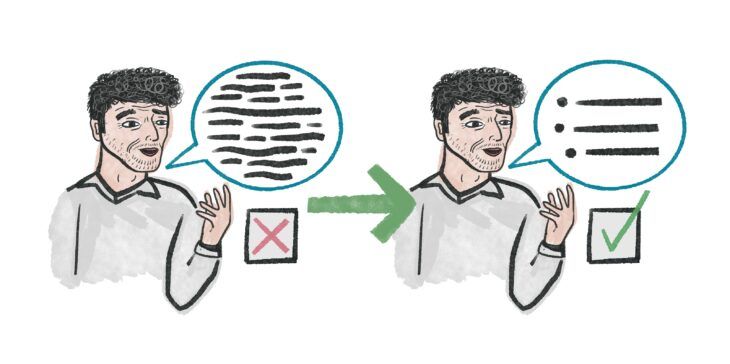Blog
Complex to Clear: Tips for Easy-to-Understand Communication
| Clay Ballard
Easy-to-understand communication makes sures that information is accessible to everyone, including people with intellectual disabilities.
By using this way of communicating, organisations can reach more people and help more people understand.

Let’s look into the why, the what, and the how of easy-to-understand communication.
The Importance of Easy-to-Understand Communication
Easy-to-understand communication makes sure that information reaches all people.
By using clear and accessible language, organisations can remove barriers for people so that everyone understands. This can empower people with intellectual disabilities and helps with equal participation. More people will understand of your message and helps people with disabilities to be part of their communities.
Examples of Easy-to-Understand Communication
The video below is a good example of easy-to-understand communication. It introduces the Civil Society Forum at 2023’s Conference of State Parties.
This video was made to be simple and clear. It communicates difficult ideas in a short, and engaging way.
Mark, a self-advocate who was part of making the video, made sure that presenting information in a way that is accessible and meaningful to everyone is important.
The Diary of Anne Frank – Easy-Read Edition
Easy Reading Validators work with Foundation Visibilia, our member in Argentina. One validator is Dominique Kantor, who works to make information easier to understand. She worked on making the Diary of Anne Frank easier to read.
The Diary of Anne Frank is a famous book, but some people find it hard to understand because of complicated language.
Today I am a leader, because I am a validator, I read and understand.
Dominique Kantor, Visibilia Foundation
Validators help make the text simpler, using clear and plain words. This way, more people can understand and enjoy the book.
Validators in Argentina are experts with disabilities who know what can be confusing for people. They also work on other materials, like museum texts and political documents, to make them more accessible.
Tips for writing Easy-to-Understand Communication
1. Include people with intellectual disabilities from the beginning
To create truly inclusive communication, it is essential to involve people with intellectual disabilities from the beginning.
By actively working with self-advocates from the planning and development process, organisations gain knowledge and learn about the barriers people face.
Working together with organisations helps people with disabilities own the information. It helps people with intellectual disabilities to know more about the subject so they can share it with their networks. It makes sures that the communication means something to your audience.
2. Pay people with intellectual disabilities for their work and contributions
It is important to recognise the expertise of people with intellectual disabilities.
When involving them in communication, organisations should pay people with intellectual disabilities and provide fair compensation for their time, effort, and contributions.
This practice promotes respect, dignity, and equity in inclusive communication processes.
3. Listen to what formats work best for people with intellectual disabilities
Communication preferences may be different for different people with intellectual disabilities.
It is essential to listen and understand what formats are most effective and accessible for them.
While easy-read materials are a valuable resource, videos, websites, and other accessible formats may work better for some types of information. Understanding this may help with your engagement of a broader audience.
The Listen Include Respect Guidelines
For more guidance on inclusive communication and the inclusion of people with intellectual disabilities, we recommend looking at the Listen Include Respect guidelines.
These guidelines, developed by Inclusion International and Down Syndrome International, provide practical and actionable steps for organisations to make sure the participation of people with intellectual disabilities. They focus specifically on communication too!
Working together with organisations helps people with disabilities own the information. It helps people with intellectual disabilities to know more about the subject so they can share it with their networks. It makes sures that the communication means something to your audience.
Easy-to-understand communication is a powerful tool.
By implementing the tips shared in this blog post and adhering to the Listen Include Respect guidelines, organisations can create accessible, inclusive communication that paves the way for meaningful participation.